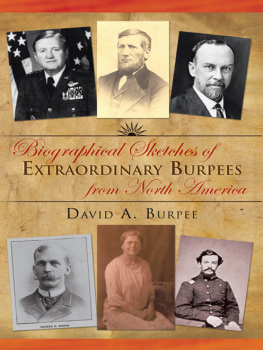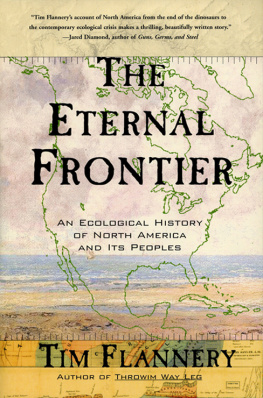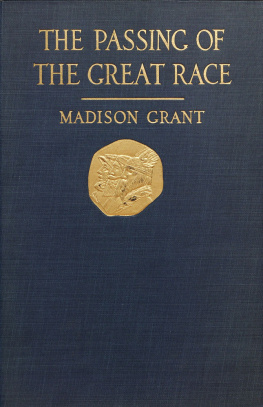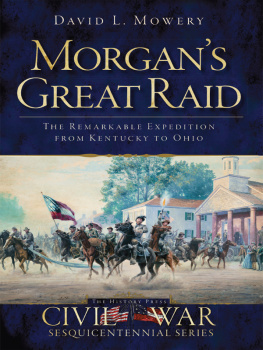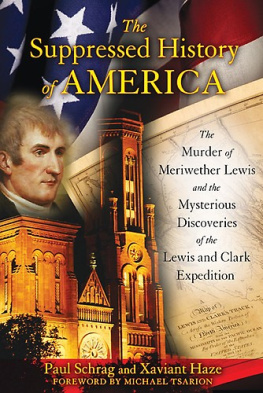The Great Paleolithic War
The Great Paleolithic War
How Science Forged an Understanding of Americas Ice Age Past
David J. Meltzer
The University of Chicago Press
Chicago and London
David J. Meltzer is the Henderson-Morrison Professor of Prehistory at Southern Methodist University, and a member of the National Academy of Sciences. He is the author of Folsom and First Peoples in a New World . He lives in Dallas.
The University of Chicago Press, Chicago 60637
The University of Chicago Press, Ltd., London
2015 by The University of Chicago
All rights reserved. Published 2015.
Printed in the United States of America
24 23 22 21 20 19 18 17 16 15 1 2 3 4 5
ISBN-13: 978-0-226-29322-6 (cloth)
ISBN-13: 978-0-226-29336-3 (e-book)
DOI: 10.7208/chicago/9780226293363.001.0001
Library of Congress Cataloging-in-Publication Data
Meltzer, David J., author.
The great Paleolithic war : how science forged an understanding of Americas ice age past / David J. Meltzer.
pages cm
Includes bibliographical references and index.
ISBN 978-0-226-29322-6 (cloth : alkaline paper) ISBN 978-0-226-29336-3 (ebook) 1. ArchaeologyUnited StatesHistory. 2. PaleoanthropologyUnited StatesHistory. 3. Natural historyUnited StatesHistory. I. Title.
CC101.U6M45 2015
930.1'2dc23
2015006581
This paper meets the requirements of ANSI/NISO Z39.48-1992 (Permanence of Paper).
For Suzanne,
who has been there since the beginning of this lengthy project,
and was mostly sure Id see it through to the end.
Contents
Those whose names follow participated in one degree or another in the long dispute over human antiquity in North America. This is not a comprehensive list, omitting as it does mention of those participating before the dispute got started, as well as the anthropologists, archaeologists, and others who throughout the long years of controversy occasionally commented from the sidelines.
Each entry provides the name, birth and death dates, education, and a brief identifying description of the occupation and affiliation of the individual at the time he or she was involved in the controversy, as well as the site or sites in which they worked or with which they were associated. Some, like Holmes and Hrdlika, were involved at virtually all the sites, and hence no particular ones are specified. Chapter 10 discusses in greater depth the relative status of different individuals connected with the controversy; however, a quick snapshot of the standing of individuals can be garnered from whether they were elected as fellows of the American Association for the Advancement of Science (AAAS Fellow), received a star in the American Men of Science (AMS) , or were elected to the National Academy of Sciences (NAS). These honors are noted in the entries that follow, along with the year of AAAS or NAS election or, in the case of the AMS star, the volume number.
1. ABBOTT, Charles C. (June 4, 1843July 27, 1919), physician, naturalist, popular author and archaeologist, Trenton gravels. Highest earned academic degree: MD 1865, University of Pennsylvania. Honors: AAAS Fellow 1883.
2. BABBITT, Frances (January 24, 1824July 6, 1891), Minnesota schoolteacher, Little Falls. Highest earned academic degree: None. Honors: AAAS Fellow 1887.
3. BALDWIN, Charles C. (December 2, 1834February 2, 1895), judge, Western Reserve Historical Society. Highest earned academic degree: JD 1857 Harvard University. Honors: AAAS Fellow 1891.
4. BARBOUR, Erwin (April 5, 1856May 10, 1947), paleontologist, Nebraska state geologist, director of the Nebraska State Museum, Longs Hill. Highest earned academic degree: PhD 1887, Yale University. Honors: AAAS Fellow 1898.
5. BLACKMAN, Elmer E. (1865September 13, 1942), archaeologist, Nebraska State Historical Society, Longs Hill. Highest earned academic degree: None. Honors: None.
6. BRINTON, Daniel G. (May 13, 1837July 31, 1899), anthropologist, University of Pennsylvania, contributing editor to Science . Highest earned academic degree: None. Honors: AAAS Fellow 1885.
7. BROWN, Barnum (February 12, 1873February 5, 1963), paleontologist, American Museum of Natural History, Folsom. Highest earned academic degree: BS 1908, University of Kansas. Honors: AAAS Fellow 1931.
8. BRYAN, Kirk (July 22, 1888August 20, 1950), geologist, Harvard University, Folsom. Highest earned academic degree: PhD 1920, Yale University. Honors: AAAS Fellow 1925; AMS 5.
9. CALVIN, Samuel (February 2, 1840April 17, 1911), geologist, Iowa Geological Survey, Lansing. Highest earned academic degree: PhD 1888, Lenox College. Honors: AAAS Fellow 1889; AMS 1.
10. CARR, Lucien (December 15, 1829January 27, 1915), archaeologist and administrative assistant, Peabody Museum, Harvard University, Trenton. Highest earned academic degree: AB 1846, St. Louis. Honors: AAAS Fellow 1877.
11. CHAMBERLIN, Rollin (October 20, 1881March 6, 1948), geologist (son of Thomas), University of Chicago, Vero. Highest earned academic degree: PhD 1907, University of Chicago. Honors: AAAS Fellow 1909; AMS 3; NAS 1940.
12. CHAMBERLIN, Thomas Chrowder (September 25, 1843November 15, 1928), glacial geologist, University of Chicago, chief of United States Geological Survey Glacial Division, founder and editor Journal of Geology . Highest earned academic degree: AM 1869, Beloit College. Honors: AAAS Fellow 1877; AMS 1; NAS 1903.
13. CLAYPOLE, Edward W. (June 1, 1835August 17, 1901), geologist, Buchtel College, Ohio (now University of Akron), editorial board of American Geologist . Highest earned academic degree: DS, 1888, London. Honors: AAAS Fellow 1882, Fellow Geological Society of London 1879.
14. COOK, Harold J. (July 31, 1887September 29, 1962), paleontologist, honorary curator, Colorado Museum of Natural History, Snake Creek, Lone Wolf Creek, Frederick, and Folsom. Highest earned academic degree: None. Honors: AAAS Fellow 1911.
15. COPE, Edward Drinker (July 28, 1840April 12, 1897), paleontologist, University of Pennsylvania. Highest earned academic degree: None. Honors: AAAS Fellow 1875; NAS 1872.
16. CRESSON, Hilborne (1848?September 6, 1894), physician and archaeologist, Field Assistant Peabody Museum, Harvard University, Claymont, Medora, Holly Oak pendant. Highest earned academic degree: None. Honors: None.
17. DALL, William H. (August 21, 1845March 27, 1927), naturalist, invertebrate paleontologist, United States Geological Survey. Highest earned academic degree: None. Honors: AAAS 1874; AMS 1; NAS 1897.
18. FIGGINS, Jesse D. (August 17, 1867June 10, 1944), naturalist, artist, and administrator, director of the Colorado Museum of Natural History, Lone Wolf Creek, Frederick, and Folsom. Highest earned academic degree: None. Honors: AAAS Fellow 1932.
19. FOWKE, Gerard (June 25, 1855March 5, 1933), archaeologist and field assistant, Bureau of American Ethnology, Lansing. Highest earned academic degree: None. Honors: None.
20. GIDLEY, James W. (January 7, 1866September 26, 1931), paleontologist, United States National Museum, Smithsonian Institution, Melbourne. Highest earned academic degree: MS 1901, Princeton University. Honors: None.
21. GILDER, Robert F. (October 6, 1856March 7, 1940), artist, printer, and journalist, Omaha World Herald , Longs Hill. Highest earned academic degree: None. Honors: None.



